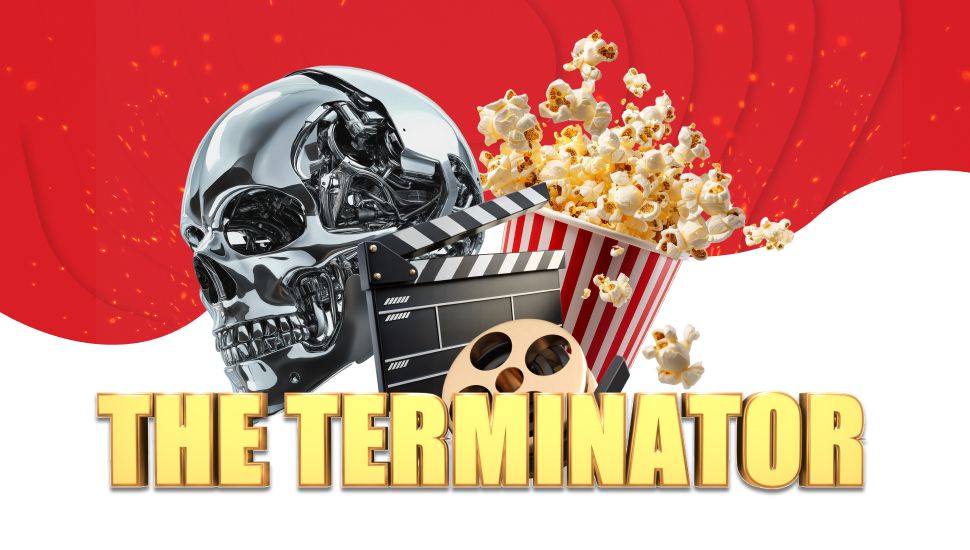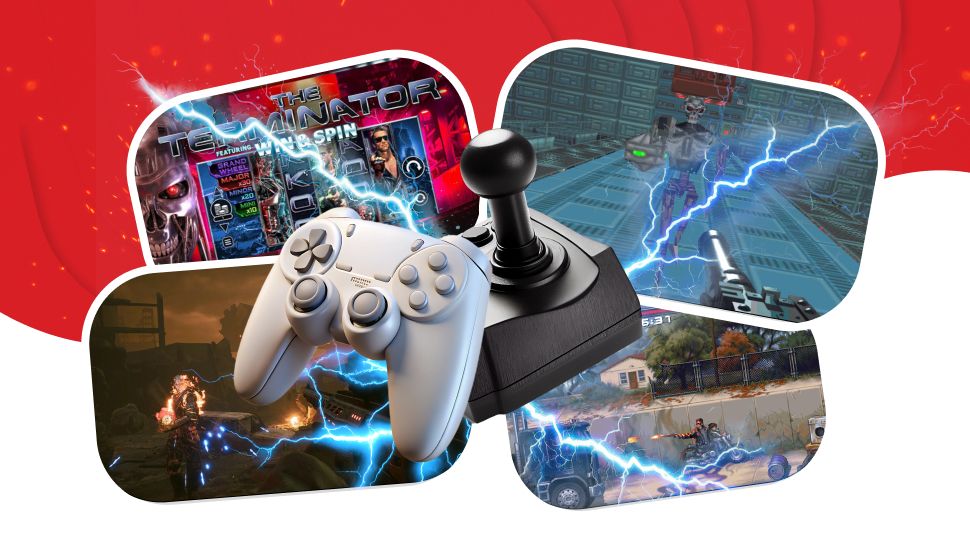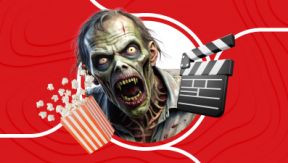
How The Terminator Became More Than a Movie
When The Terminator hit cinemas in 1984, few could have predicted the success it would achieve in the future. On paper, it was a relatively low-budget sci-fi thriller, especially when compared to other Hollywood sci-fi movies of the time. But in practice, it introduced something much larger: a story that tapped into worries about technology, control, and survival in a machine-driven world. What began as a single film has since become one of the most iconic pieces of 20th-century pop culture.
It is safe to say that The Terminator evolved into a symbol. Its imagery lives on not just through sequels, but through memes, parodies, and other visual callbacks. The film's ideas, like the dangers of unknown technology or what it means to be human, still feel relevant today, especially with the rise of AI tech.

A Franchise That Refused to Fade
By the early 1990s, The Terminator had taken on a life of its own. What started as a dark science fiction story had grown into something people recognised instantly, and not because they had seen the film, but because the visuals had become part of everyday pop culture and marketing. A figure stepping through fire, red eyes glowing, leather jacket, steel endoskeleton - these weren't just film props anymore. They became part of a visual language that kept appearing across media, design, and everyday references.
The characters faced the same fate, becoming more than just movie roles. The T-800 stood for something unstoppable and silent, while Sarah Connor, once an ordinary woman, became the image of resilience.
Even when later sequels didn't match the original's success, the look and feel of The Terminator stayed strong. The heads-up display, the skulls, the slow mechanical movements - they kept the world familiar, no matter how the plot moved.
And the story didn't stop with just cinema. Today, The Terminator exists in multiple forms: from novels and strategy games to collectables, fan-made projects, and even slot machines that recreate the mood and visual cues of the original film.
The Power Behind the Story
There is a reason The Terminator still matters, even decades later. The machines and special effects left a mark on sci-fi, but what truly stayed with people was its story. It was never just about robots, but rather about people trying to make it through a world that seems to be designed against them.
The ideas behind it are easy to follow and still relatable. Losing control. Being watched. Facing something faster, stronger, and impossible to stop. As obvious as it gets, that kind of fear isn't limited just to science fiction - a lot of people feel it in real life too. That is why the story still resonates even for younger audiences who didn't grow up with the film. At its heart, it is about fighting back when everything seems stacked against you.
Characters like Sarah Connor were the face of this struggle. She wasn't a hero at first, but she eventually became one, conveying a message that remains relevant today, in an era where people are told to adapt or fall behind. And the T-800, a machine with no remorse, became an image of fear not just because of its strength, but because of how emotionless that strength was.
Sound design was just as important - heavy footsteps, driving soundtrack, and the uneasy quiet before the intense action. It wasn't about jump scares or big effects. The tension just built slowly and settled in, staying with people long after the movie was over.
Symbols That Still Speak
By now, the world of The Terminator doesn't need much explaining. A certain font, a red eye glowing in the dark, melted metal, or a line spoken in a flat voice - small details like these are enough to ring a bell. The film's look and sound became symbols, not just of a franchise, but of an entire era of science fiction.
We have already seen how the film's visuals became part of its identity - the steel skeleton, the fire, the leather - all of it merged into one recognisable aesthetic. And it goes further. The sharp, metallic title font still feels modern, while Brad Fiedel's theme soundtrack drives forward with the same cold force as the machine itself.
Let's not forget about the iconic "I'll be back" and "Hasta la vista, baby" - legendary phrases that can't be said without the cold gaze and stiff voice that made them unforgettable.
And that is one of the reasons why these symbols work. They are instantly familiar, even out of context. You don't need to see the whole movie to recognise the sound of those footsteps or the manner of speech. It is a language built from tension, tone, and timing, which still speaks.
When a Story Becomes a Game

The Terminator quickly moved beyond the movie screen. As the franchise grew, it steadily found its way into arcades, consoles, and eventually mobile screens, and not just as marketing spin-offs, but as interactive elements of its original story. What started as a cinematic chase became something you could dive into.
Some of the first games were side-scrollers or rail shooters where you would play as Kyle Reese or Sarah Connor, blasting through pixelated versions of Skynet's world. The graphics were basic, sure, but the vibe definitely was there - that same feeling of being hunted, of needing to stay one step ahead. Over the years, more polished titles followed - more shooters, strategy games, and first-person narratives. Each one tried, in its own way, to recapture the tone of the original movie.
Transitioning from passive viewer to active participant made The Terminator more than just a movie brand. It became a world where players could enter and try for themselves. These games weren't always critically acclaimed, but they kept the mood alive: the music, the metal, the sense of time running out.
Decades later, that same idea turned up in what some might call an unexpected place - an online slot. In 2023, Inspired Gaming released The Terminator: Win & Spin, based on the original film, and it's not just a game with familiar faces. The look, the sound, and the pacing all bring back the feeling of the original movie.
Right from the start, the visual style brings you back to the world of the movie. The screen flashes with icy lighting, broken circuits flicker at the edges, and the layout feels sharp and industrial. You will see Sarah Connor, Kyle Reese, the T-800, and the Terminator himself not just as static images, but animated, speaking, and reacting.
Even the sound design pulls from the 1984 original. Audio cues resemble the iconic Brad Fiedel's soundtrack, though not exact samples, but unmistakable in tone and motive. That steady, machine-like rhythm. The heavy footsteps. The glitchy hum of broken tech. It's the kind of detail that clicks the moment you hear it - still familiar, even if you haven't seen the film in years.
What Inspired Gaming created goes beyond a typical branded release. Instead of just using familiar characters, they have rebuilt the feel of The Terminator in a format made for accessible, modern play. The studio faced a real challenge in turning fear and tension into visuals and sounds that still make people feel something.
In interviews and press materials, the studio spoke about delivering "a land of nostalgia and big thrills," and while that might sound like marketing-speak, it makes sense once you have seen the game. This version of The Terminator doesn't ask you to rewatch the film; instead, it simply reminds you of how it felt.
In a way, that is what all these adaptations have done, whether through arcade screens or spinning reels. They preserve the energy of The Terminator: the chase, the threat, and the instinct to keep moving forward.
Why It Still Matters
The Terminator franchise still remains part of the cultural conversation, and not because of reboots, but because of what it has left behind since the beginning. While some later titles struggled to make an impact, the core idea, and the way it looked, sounded, and felt, it never really disappeared. What sticks with people isn't a queue of sequels, but the lasting impression of something that once felt refreshingly new.
Some stories stay with people for reasons that go beyond the plot. The Terminator is one of them. Its most recognisable traits, like the voice, the look, the atmosphere, they didn't just define the film, but became part of how people remember the era itself. Whether it's a cold line delivered without emotion, a metal silhouette half-lit in smoke, or the grainy sounds of machinery, certain details kept showing up long after the movie came out. These elements stayed with people because they said more than the story ever needed to - and they still do.
Cultural brands like this succeed by showing up outside cinemas and adapting there as a result. That is why The Terminator didn't stay just as a movie. It turned into games, pinball machines, fan art, Halloween costumes, slot machines, and more. People don't have to revisit the entire story to recognise it. A sound, a line, a font — is just enough.
And obviously, this kind of cultural reach isn't unique to The Terminator. Star Wars is a clear example. Not everyone knows every plot detail, but almost anyone can spot a stormtrooper or recognise the sound of a lightsaber. The Alien franchise works the same way with its signature Xenomorph silhouette, the hiss, and the tagline. Even Jurassic Park, with its roaring T Rex and circular logo, lives on through McDonald's toys, theme parks, table games, and other merchandise.
What ties these kinds of films together is how easily people can recognise them, even without knowing the full story. They don't need a full rewatch or background explanation - just a line, a shape, or a sound is enough to bring the feeling back. The Terminator is no different. The impact comes from its mood, its pacing, and the way it carries tension.
There is also something to be said about timing. The original film came out during a period of uncertainty around new technology - about machines, the future, and where humanity might be headed. That part hasn't gone away. In fact, it feels more relevant now than it did in the '80s. The idea that technology could slip out of human hands doesn't sound like science fiction anymore. That is probably one of the reasons why The Terminator remains relevant to this day, not just because of nostalgia, but also because it still raises questions.
When a story manages to feel like both the past and the future at once, it is most likely to stay with us. Not as a single film, but as something we remember - in how we look at machines, how we respond to fear, and how we keep going anyway.
Other Articles You May Be Interested In







